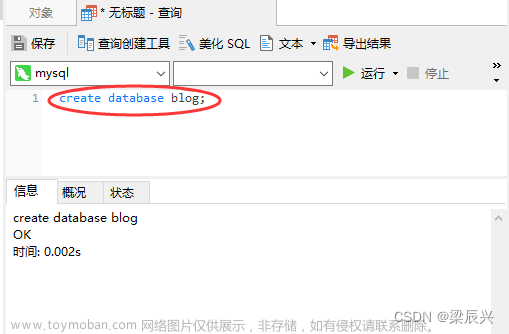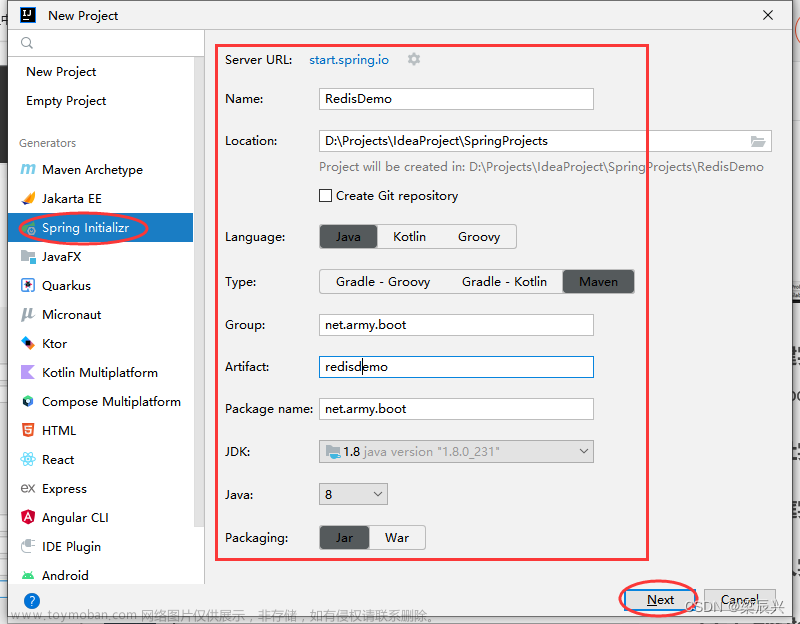本章内容
-
-
- ES 及 x-pack 下载安装
-
-
-
- Kibana 及 x-pack 下载安装
-
-
-
- Spring Boot 整合 ES
-
-
-
- Spring Boot 操作 ES
-
阅读时间:5 分钟
摘录:打算起手不凡写出鸿篇巨作的,往往坚持不了完成第一章节
原文出处:spring4all.com
1. ES 及 x-pack 下载安装
spring-data-elasticsearch 之 ElasticSearch 架构初探,详细看下我另外一篇文章《深入浅出 spring-data-elasticsearch 之 ElasticSearch 架构初探(一)》 http://www.spring4all.com/article/330
ES 三大要素:
-
文档(Document) 文档,在面向对象观念就是一个对象。在 ES 里面,是一个大 JSON 对象,是指定了唯一 ID 的最底层或者根对象。文档的位置由 _index、_type 和 _id 唯一标识。
-
索引(Index) 索引,用于区分文档成组,即分到一组的文档集合。索引,用于存储文档和使文档可被搜索。比如项目存索引 project 里面,交易存索引 sales 等。
-
类型(Type) 类型,用于区分索引中的文档,即在索引中对数据逻辑分区。比如索引 project 的项目数据,根据项目类型 ui 项目、插画项目等进行区分。
和关系型数据库 MySQL 做个类比:
- Document 类似于 Record
- Type 类似于 Table
- Index 类似于 Database
安装步骤如下:
1. 下载 ES 5.5.3
下载地址: https://www.elastic.co/downloads/past-releases/elasticsearch-5-5-3
2. 安装 ES 插件 x-pack
解压 – 然后安装 插件 x-pack
tar -xzf elasticsearch-5.3.0.tar.gz
cd elasticsearch-5.3.0/
// 安装 X-Pack
bin/elasticsearch-plugin install x-pack
3. 配置 ES 并启动
设置 Xpack 安全验证为 false:
vim config/elasticsearch.yml
并添加下面配置:
xpack.security.enabled: false
并启动 ES:
./bin/elasticsearch
或者后台启动
./bin/elasticsearch -d
2. Kibana 及 x-pack 下载安装
1. 下载 Kibana 5.5.3
下载地址: https://www.elastic.co/downloads/past-releases/kibana-5-5-3
2. 安装 Kibana 插件 x-pack
解压 – 然后安装 插件 x-pack
tar -zxvf kibana-5.5.3-darwin-x86_64.tar.gz
cd kibana-5.5.3-darwin-x86_64/
// 安装 X-Pack
bin/kibana-plugin install x-pack
3. 配置 Kibana 并启动
设置 Xpack 安全验证为 false:
vim config/kibana.yml
并添加下面配置:
xpack.security.enabled: false
并启动 Kibana:
./bin/kibanah
或者后台启动
nohup ./bin/kibana &
必须注意:先启动 ES,再启动 Kibana。
如果后台启动注意,关闭命令如下:
ps aux | grep 'elastic'
kill -9 pid
启动成功后,打开网页访问 127.0.0.1:5601 , 默认账号为:elasti,密码为 changeme。
3. Spring Boot 整合 ES
1. pom.xml 依赖
代码如下:
<?xml version="1.0" encoding="UTF-8"?>
<project xmlns="http://maven.apache.org/POM/4.0.0"
xmlns:xsi="http://www.w3.org/2001/XMLSchema-instance"
xsi:schemaLocation="http://maven.apache.org/POM/4.0.0 http://maven.apache.org/xsd/maven-4.0.0.xsd">
<modelVersion>4.0.0</modelVersion>
<groupId>com.spring4all</groupId>
<artifactId>bysocket</artifactId>
<version>1.0.0</version>
<description>bysocket :: AI For All</description>
<properties>
<lombok.version>1.16.18</lombok.version>
</properties>
<parent>
<groupId>org.springframework.boot</groupId>
<artifactId>spring-boot-starter-parent</artifactId>
<version>2.0.0.M7</version>
</parent>
<dependencies>
<!-- web 依赖 -->
<dependency>
<groupId>org.springframework.boot</groupId>
<artifactId>spring-boot-starter-web</artifactId>
<exclusions>
<exclusion>
<groupId>org.springframework.boot</groupId>
<artifactId>spring-boot-starter-logging</artifactId>
</exclusion>
<exclusion>
<groupId>org.springframework.boot</groupId>
<artifactId>spring-boot-starter-tomcat</artifactId>
</exclusion>
</exclusions>
</dependency>
<!-- 日志 log4j2 -->
<dependency>
<groupId>org.springframework.boot</groupId>
<artifactId>spring-boot-starter-log4j2</artifactId>
</dependency>
<!-- 容器 undertow -->
<dependency>
<groupId>org.springframework.boot</groupId>
<artifactId>spring-boot-starter-undertow</artifactId>
</dependency>
<!-- 简化 lombok -->
<dependency>
<groupId>org.projectlombok</groupId>
<artifactId>lombok</artifactId>
<version>${lombok.version}</version>
</dependency>
<!-- ES -->
<dependency>
<groupId>org.springframework.boot</groupId>
<artifactId>spring-boot-starter-data-elasticsearch</artifactId>
</dependency>
</dependencies>
<repositories>
<repository>
<id>spring-milestones</id>
<name>Spring Milestones</name>
<url>https://repo.spring.io/libs-milestone</url>
<snapshots>
<enabled>true</enabled>
</snapshots>
</repository>
</repositories>
<build>
<plugins>
<plugin>
<groupId>org.springframework.boot</groupId>
<artifactId>spring-boot-maven-plugin</artifactId>
<version>1.5.7.RELEASE</version>
<configuration>
<fork>true</fork>
<addResources>true</addResources>
</configuration>
<executions>
<execution>
<goals>
<goal>repackage</goal>
</goals>
</execution>
</executions>
</plugin>
</plugins>
</build>
</project>
Spring Data
要了解 spring-data-elasticsearch 是什么,首先了解什么是 Spring Data。 Spring Data 基于 Spring 为数据访问提供一种相似且一致性的编程模型,并保存底层数据存储的。
Spring Data Elasticsearch
spring-data-elasticsearch 是 Spring Data 的 Community modules 之一,是 Spring Data 对 Elasticsearch 引擎的实现。 Elasticsearch 默认提供轻量级的 HTTP Restful 接口形式的访问。相对来说,使用 HTTP Client 调用也很简单。但 spring-data-elasticsearch 可以更快的支持构建在 Spring 应用上,比如在 application.properties 配置 ES 节点信息和 spring-boot-starter-data-elasticsearch 依赖,直接在 Spring Boot 应用上使用。
这里依赖的 spring-boot-starter-data-elasticsearch 版本是 2.0,对应的 spring-data-elasticsearch 版本是 5.5.3.RELEASE。 对应 ES 尽量安装成版本一致 5.5.3。
2. application.properties 配置 ES 地址
application.properties 配置如下:
# ES
spring:
data:
elasticsearch:
repositories:
enabled: true
cluster-name: elasticsearch
cluster-nodes: 120.132.29.37:9300
默认 9300 是 Java 客户端的端口。9200 是支持 Restful HTTP 的接口。 更多配置:
- spring.data.elasticsearch.cluster-name Elasticsearch 集群名。(默认值: elasticsearch)
- spring.data.elasticsearch.cluster-nodes 集群节点地址列表,用逗号分隔。如果没有指定,就启动一个客户端节点。
- spring.data.elasticsearch.propertie 用来配置客户端的额外属性。
- spring.data.elasticsearch.repositories.enabled 开启 Elasticsearch 仓库。(默认值:true。)
3. ES 数据操作层
文章实体类代码如下:
/**
* 文章
*/
@Document(indexName = "elasticsearch", type = "article")
@Data
public class ArticleEntity implements Serializable {
// 作者信息
private String writer;
// 文章信息
@Id
private Long id;
private String title;
private String content;
// 归属信息
private Long admin;
}
- City 属性名不支持驼峰式。
- indexName 配置必须是全部小写,不然会出异常。 org.elasticsearch.indices.InvalidIndexNameException: Invalid index name [provinceIndex], must be lowercase
ES 数据操作层实现代码如下:
@Repository
public interface ArticleRepository extends ElasticsearchRepository<ArticleEntity, Long> {
}
接口只要继承 ElasticsearchRepository 接口类即可,具体使用的是该接口的方法:
<S extends T> S save(S var1);
<S extends T> Iterable<S> saveAll(Iterable<S> var1);
Optional<T> findById(ID var1);
boolean existsById(ID var1);
Iterable<T> findAll();
Iterable<T> findAllById(Iterable<ID> var1);
long count();
void deleteById(ID var1);
void delete(T var1);
void deleteAll(Iterable<? extends T> var1);
void deleteAll();
<S extends T> S index(S var1);
Iterable<T> search(QueryBuilder var1);
Page<T> search(QueryBuilder var1, Pageable var2);
Page<T> search(SearchQuery var1);
Page<T> searchSimilar(T var1, String[] var2, Pageable var3);
void refresh();
Class<T> getEntityClass();
增删改查、搜索都有了,不需要我们具体实现,只需我们传入对应的参数即可。
4. 文章搜索 ES 业务逻辑实现类
实现了批量保存到 ES 的接口,代码如下:
@Service
@Primary
@AllArgsConstructor
@Log4j2
public class ArticleServiceImpl implements ArticleService {
private final ArticleRepository articleRepository;
@Override
public boolean saveArticles(List<ArticleBean> articleBeanList) {
List articleEntityList = transferToArticleEntityList(articleBeanList);
articleRepository.saveAll(articleEntityList);
return true;
}
... 省略
}
4. Spring Boot 操作 ES
用 Postman 工具新增文章:
POST /api/articles HTTP/1.1
Host: 127.0.0.1:8080
Content-Type: application/json
Cache-Control: no-cache
Postman-Token: d6288a82-b98f-1c1e-6dad-15b0223102ab
[
{
"id":2,
"title":"文章题目",
"writer":"温岭",
"content":"温岭是个沿海城市",
"admin":1
},
{
"id":3,
"title":"文章题目文章题目文章题目",
"writer":"温1岭",
"content":"温2岭是个沿海城市",
"admin":1
}
]
然后在 Kibana 设置 indexName 为 “elasticsearch”,并打开 Discover tab,可以看到数据,并可以搜索查询,如图:
更多 ES 文章:
- 《Spring Boot 整合 Elasticsearch》
- 《深入浅出 spring-data-elasticsearch 之 ElasticSearch 架构初探(一)》
- 《深入浅出 spring-data-elasticsearch 系列 – 概述及入门(二)》
- 《深入浅出 spring-data-elasticsearch – 基本案例详解(三)》
- 《深入浅出 spring-data-elasticsearch – 实战案例详解(四)》
关注即可得系列教程文章哦!
作者:SpringForAll文章来源:https://www.toymoban.com/news/detail-830701.html
原文地址:https://my.oschina.net/u/3677020/blog/1586271文章来源地址https://www.toymoban.com/news/detail-830701.html
到了这里,关于Spring Boot 2.0 M7 整合 ES 5 、Kibana 和 X-pack的文章就介绍完了。如果您还想了解更多内容,请在右上角搜索TOY模板网以前的文章或继续浏览下面的相关文章,希望大家以后多多支持TOY模板网!











